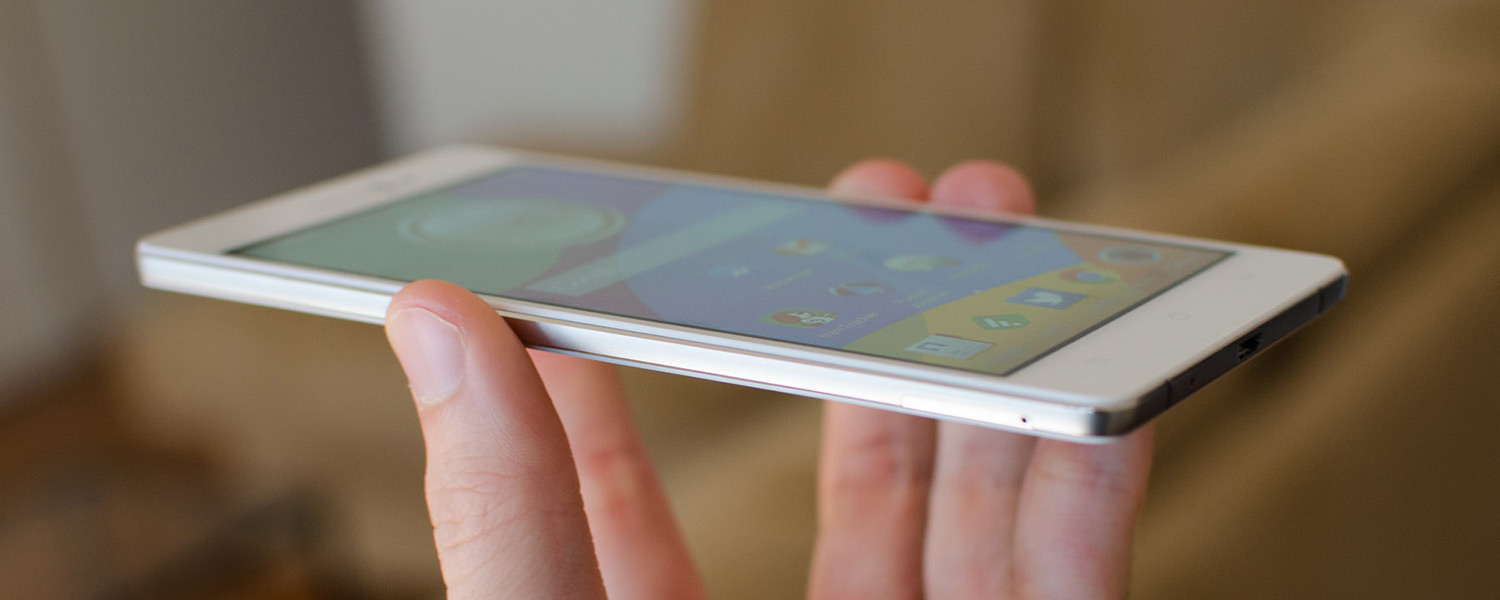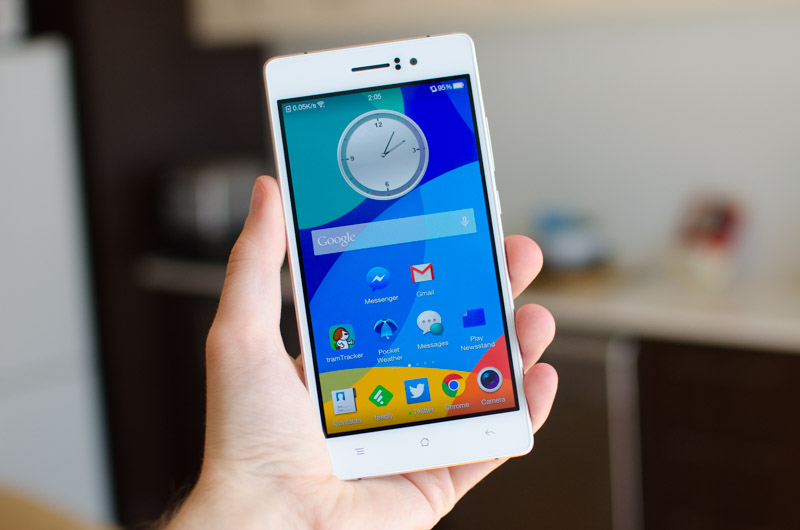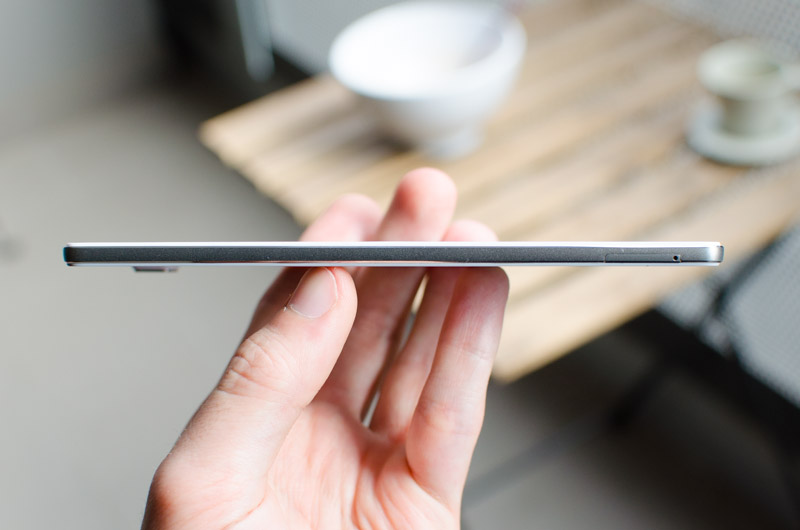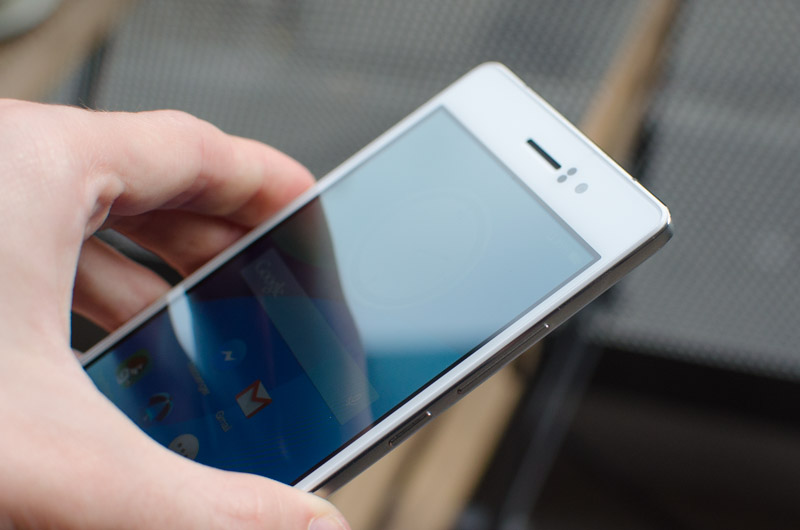Smartphone manufacturers are obsessed with thinness, although I would favor a handset with awesome battery life than a super slim chassis, and this tends to be echoed by many others. After all, with more powerful processors and brighter, higher resolution displays, it's key to have a large battery to make sure your device lasts the whole day.
But being the 'best at' this or 'most at' that still gives you bragging rights and that's what Chinese phone maker Oppo appears to be after with the R5. Granted, it's not their main flagship smartphone, but it's what the company claims is the slimmest handset going around, at just 4.85mm thick. It is a pretty impressive form factor, coming in at more than 2mm thinner than the already svelte iPhone 6, but it's not without drawbacks and trade-offs.
For one, the internal battery in the Oppo R5 is just 2,000 mAh, which is particularly small when you consider the display on this Android device is a standard 5.2-inch 1080p AMOLED. Oppo hasn't gone all out on the SoC side, including a modest Snapdragon 615 with 16 GB of storage that can't be expanded upon. The protruding camera doesn't blow away its competitors either, at 13 megapixels without optical image stabilization.
The Oppo R5 is clearly designed to destroy its competitors in form factor, rather than specifications and hardware. So what does a super slim smartphone deliver? Is it actually worth using over a thicker device with, potentially, better hardware?
The first time I pulled the Oppo R5 out of its box, it did strike me just how amazingly thin the handset is. The majority of the body is just 5.2mm thick as measured by a micrometer, slightly larger than the figure Oppo quotes, but impressive nonetheless. The only part of the handset that balloons out larger than this is the camera, which protrudes from the back panel by 1.9mm to accommodate the 13-megapixel sensor and its f/2.0 lens.
While the 5.2-inch display and sizable top and botton bezels prevent the Oppo R5 from feeling like a compact handset, the slimness of the device is really something to behold. Simply put, the R5 is the slimmest smartphone I've ever used and its advantage over its competitors in this area is very noticeable. Thanks to its slimness, it feels great in your hands despite its large profile, and when in your pocket it feels like it's barely there.
Oppo has also used high quality materials for the construction of the R5. The slim edges of the handset, as well as a significant portion of the back panel, are made from aluminium, which not only looks great thanks to a shiny matte finish, but also feels strong and dependable. The use of plain white rubberized plastic to complement the back panel looks okay, but the large piece of metal really steals the show. And despite the thinness of the handset, the R5 is extremely solid, unlikely to bend or flex without significant force.
The front panel is white, protected entirely by Gorilla Glass 3. This makes the whole display area and the bezels around it smooth and swooshable, and although the design isn't anything to write home about, the use of just one material here is simple and effective. Above the display are the usual speaker, sensors and camera, while below you'll find the capacitive navigation buttons. I don't like the inclusion of a legacy menu button, with most other manufacturers phasing it out in their new handsets in favour of on-screen buttons or the much more useful app switcher button.
Around the edges of the Oppo R5 you'll find the volume and power buttons on the right side, both in ideal positions for easy access. Thanks to their metal construction they're also solid and satisfyingly clicky. Along the bottom is the microUSB port, while the top is blank and the left side only features a micro-SIM card tray.
With Oppo opting to make the R5 as slim as possible, this has led to one major and incredibly inconvenient sacrifice, as you might have noticed: there is no 3.5mm audio jack on this smartphone. That means no listening to music via headphones as with basically every other device out there. Its omission is annoying and limits the flexibility of the R5.
Oppo does provide a workaround to the lack of an audio jack through an adapter to microUSB that's included in the box. However this isn't an ideal solution, as it creates a bulky end to your headphone cable, and if you forget it or lose it you'll be without headphone support for your device. There's also the option to use Bluetooth headphones (like with most other phones), but if you haven't purchased a pair already this is hardly a great, or cheap, option.
And as you'll see on the following pages, the lack of a 3.5mm audio jack isn't the only sacrifice that has been made for the sake of smartphone slimness.












